The X Button
Solitary Confines
by Todd Ciolek,

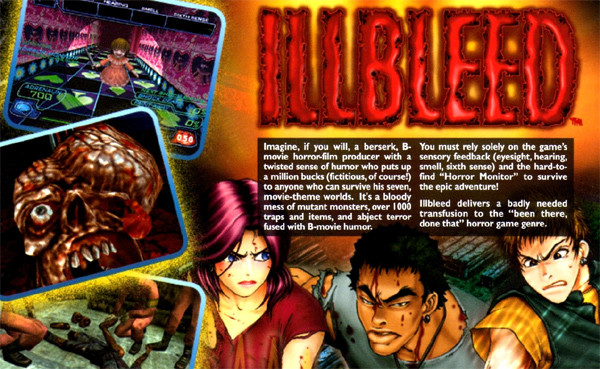
John Anderson's Gamasutra post gives a thorough look at Nishigaki's career, from his days at Climax Entertainment to his founding of a new studio called Climax Graphics and his eventual work at Cavia. Nishigaki mentions the travails of developing Blue Stinger, which went through underpaid voice actors and Activision's meddlesome changes to the player's viewpoint. He discusses the unfortunate fate of Illbleed, a wonderfully strange horror-action game which arrived just after Sega announced the Dreamcast's demise. He even details how Sega reacted to Illbleed's demonic parody of Sonic the Hedgehog.
There's a sad ending to it all: Nishigaki passed away in 2004. So it's all the more important that he's remembered for Blue Stinger, Illbleed, and his remarkable creativity.
NEWS
DISSIDIA FINAL FANTASY GOES TO ARCADES FOR SOME REASON
I found Dissidia Final Fantasy and its sequel a little disappointing. That wasn't so much the fault of the games. They're decent arena brawlers with some neat additions to the typical structure of a fighting game. It was more that they didn't cater directly to me and include personal favorite characters like Balthier from Final Fantasy XII or Quina Quen from Final Fantasy IX. Instead, the games went with the major characters from each Final Fantasy, just to be fair. Well, fair is sometimes boring.

I doubt that the new arcade incarnation of Dissidia Final Fantasy will pander specifically for me, but it at least looks sharp. The first trailer shows off three-on-three battles and a handful of Final Fantasy characters. Final Fantasy VII's Cloud Strife, Final Fantasy VI's Terra Branford, and the original's Warrior of Light all appeared in the older games, but the new inclusion of Y'Shtola from Final Fantasy XIV: A Realm Reborn is heartening. Perhaps Square will throw in some more obscure characters before the game's arcade debut—and more yet for its inevitable port to a console or handheld. With the current state of arcades, I doubt a Square Enix game will appear only there.
SQUARE ENIX PROPERTIES OPEN TO SUGGESTIONS
Not every Square Enix title does Final Fantasy numbers, and many are left to molder in the company's back catalog. A solution may lie in the Square Enix Collective, a new program that opens older games up to ideas from smaller developers. A studio might submit a proposal, and if Square Enix likes it, they'll sponsor a Kickstarter for it. Right now, the Collective welcomes pitches for reviving three Eidos properties: Gex, Fear Effect, and Anachronox.

This is particularly interesting news for Anachronox and Fear Effect. A charming space-opera RPG, Ion Storm's Anachronox proved too ambitious for one game and ended on a nasty cliffhanger. The sleazy futurepunk Fear Effect saw two successful PlayStation action games, but a PlayStation 2 outing was canceled. Might the developer dig up their work on Fear Effect 3: Inferno and sell it to Square Enix? Might we finally see the second Anachronox? And what about Gex, the smart-aleck gecko who starred in largely forgettable platformers from the 3DO to the Nintendo 64? Who will care enough to bring him back?
MICROSOFT SHUTS DOWN NEW PHANTOM DUST DEVELOPER
Speaking of canceled games, Microsoft's Phantom Dust revival isn't technically among them. Darkside Games, developers of the Xbox One's new Phantom Dust, recently shut down after Microsoft canned their version of the game, according to Kotaku. Yet this doesn't kill off plans for the new title, a follow-up to Yukio Futatsugi's cult-fave Phantom Dust from the original Xbox. Microsoft maintains that they're still working on it, though it might not turn out the way Darkside envisioned it.
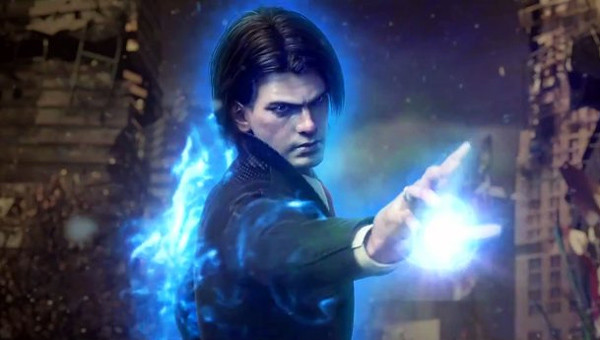
We didn't see much of Darkside's take on the new Phantom Dust. A trailer from last year's E3 unveiled the game with footage of two psychics turning a park into a fiery battleground, and neither of them looked much like the dingy mutant heroes of the original game. Still, I'll miss the Darkside designs for the remake. The guy in the suit looked a little like Kyle Maclachlan.
THEY STAND ALONE
It's common practice for the game-playing populace, critics and audiences alike, to champion original games. We prize unique creations unclouded by familiar characters or ties to established series. Then we contradict ourselves by harping on how no one's making sequels to our favorite games, whether they're Captain Rainbow or The Guardian Legend.
The last generation of games offered plenty of reasons to make ourselves terrible liars and hypocrites. Though it hasn't passed entirely yet, the era of the PlayStation 3, Xbox 360, and Wii saw a number of original games that could easily inspire sequels. Some might've improved on ideas, others could just expand, and a few might even wrap up unfinished business.

The PlayStation 3 wanted for standouts in its first year on the market, and it had an unlikely contender in Folklore. An action-adventure from Game Republic, it followed a college student and a reporter through a bizarre Celtic fantasyland brimming with faeries, gremlins, and some of the best, brightest use of color you'll see in a video game. Folklore wasn't entirely smooth in gameplay, despite a novel creature-summoning method and clever use of the PlayStation 3 controller's motion sensor (back when Sony still hyped it). It demanded that players complete five of its seven stages with each character, and its overall aesthetic of Irish fables and muppet-like monster wasn't to the tastes of early PlayStation 3 owners. Game Republic planned a sequel, but the original Folklore never sold well enough to let another out of the box.
In fact, Game Republic's entire story remains tragic. Yoshiki Okamoto, whose experience stretches from old Konami arcade classics to Street Fighter II and Battle Circuit, founded the studio with grand hopes. Their games never quite sunk in, and Folklore wasn't the only unfortunate solo act. Majin and the Forsaken Kingdom brought a creative method to the PlayStation 3 and Xbox 360, as it followed a warrior and a giant furry creature through puzzle-filled ruins. If the characters were a touch bland, the gameplay proved solid, and a follow-up could've easily enlivened things. We'll never see one, though. Okamoto rebounded after Game Republic's closure and made successful smartphone games like Monster Strike, but Folklore and Majin are well out of sight.

When it comes to role-playing games, developer tri-Ace wages a constant war between creative gameplay and routine storytelling. Sometimes they happen on a uniformly great thing (such as the Valkyrie Profile series) and at other times they roll around in cliché and just get it everywhere and it's a horrible mess that no one wants to clean up (such as Star Ocean: The Last Hope). Resonance of Fate landed mostly on tri-Ace's good side. It came from the same team that crafted Valkyrie Profile 2: Silmeria, and so it's a compelling RPG with a fragmented plot and a fantastic battle system. Its three protagonists all use firearms, and the game handles the shootouts and attack ranges with remarkable aplomb.
Resonance of Fate was the best of tri-Ace's three big RPGs of the generation, the other two being Infinite Undiscovery and Star Ocean: The Last Hope. None of them caught hold quite like tri-Ace wanted, and the studio found less expensive endeavors: Frontier Gate on the PSP, Beyond the Labyrinth on the 3DS, and work on Sega's Phantasy Star Nova and Square Enix's Final Fantasy XIII follow-ups. Unless Resonance of Fate returns as a smartphone title, it'll stay a one-off.

Platinum Games' Vanquish looked exactly like every other third-person shooter in its early phases. It pits heroic American astro-commandos against Russian fascists, and it hashes out their disagreements with armored marines shooting each other in space colonies. Yet the game proved far better than its first impressions. Director Shinji Mikami, who we still have to introduce as the creator of Resident Evil, gave Vanquish a rapid-paced approach that forced players to dodge, run, and use a fun sliding move. It wasn't as long as your typical Gears of War or Halo, but it didn't have to be. It was different.
Several Platinum games re-emerged in new places. MadWorld came back as Anarchy Reigns, and Nintendo revived Bayonetta for a Wii U sequel. In that light, Vanquish is the most neglected piece of Platinum's catalog.
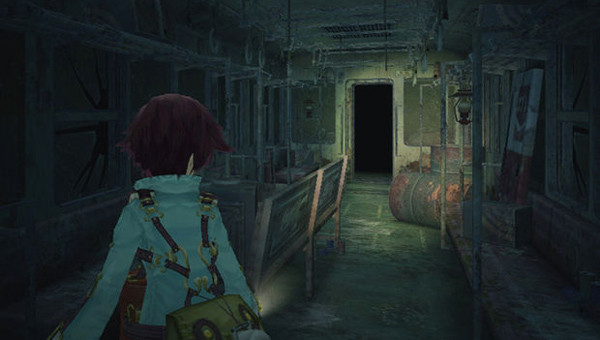
Fragile Dreams: Farewell Ruins of the Moon could've been a much better game. It guides a boy around an abandoned Tokyo, a place made even more haunting by the elegant, peaceful aura of its emptiness. Yet its gameplay is rough in both exploration and simplistic combat, and that didn't sit well with some players. It's worth playing for atmosphere, at least. The cluttered scenery, nighttime landscapes, and gentle soundtrack make an exceptionally pretty game—particularly on the Wii, a system often disparaged for its standard-definition output. While Fragile wraps up its central story, it leaves a good deal of its supposedly wide world unexplored, with the vague promise of a continuation that never came.

Lastly, I'll mention Bullet Witch. Yes, that Bullet Witch. I know that critics and players and the parody webcomic Game Genies all trampled upon the game, and in some ways Bullet Witch deserved it. It drops a gun-toting sorceress named Alicia Claus into a U.S. city on the verge of demonic apocalypse, and it plays out in standard action-shooter fashion. Bullet Witch made a lot of mistakes here. It introduced an awkward reloading method, it made certain weapons useless, and it stuck Alicia with an annoying soldier sidekick. It also put her in a Playboy spread of naked video-game women, alongside feminist icons from God of War and Tabula Rasa.
Yet Bullet Witch has potential. Its environments are detailed and highly interactive, and the mix of conventional weapons and magic provides a satisfying impact…when it's not frustrating. Bullet Witch was also the work of Cavia, makes of the vicious Nier and Drakengard games, and Alicia's journey through a monster-laden cityscape could use some twisted storytelling. Besides, I can't dismiss a game where a witch wields a pump-action shotgun broomstick.

If it's good to recognize underfed ideas, I think it's important to admit when games don't need any sequels. Some games tie up their plotlines and themes so nicely that a return would only dilute the impact. Pandora's Tower, though a flawed game from lesser-known developer Ganbarion, sealed itself with multiple endings and varied designs, and it left me fully satisfied. The same goes for Mistwalker combining marvelous short stories with Final Fantasy melodrama in Lost Odyssey or mixing action-RPG squad battles and fairy-tale fulfillment with The Last Story. Cavia's Nier built a bittersweet story with wonderful variety, but I think it stands best on its own. I'd much sooner see Ganbarion, Mistwalker, and the surviving talents of Cavia create more new games.
Even seemingly unfinished games can feel whole. Double Fine's Brutal Legend clearly didn't cram in everything it wanted to, and yet its storyline and heavy-metal tributes emerged complete. That's good enough for me.
I've approached only a few promising games from the PlayStation 3, Xbox 360, and Wii. I'm sure you can think of other titles that deserved their own sequels or remakes. And perhaps you have a few favorites that, for some reason, shouldn't be revisited. That'll let us keep at least a little of our high-minded façade.
NEXT WEEK'S RELEASES
DRAGON BALL XENOVERSE 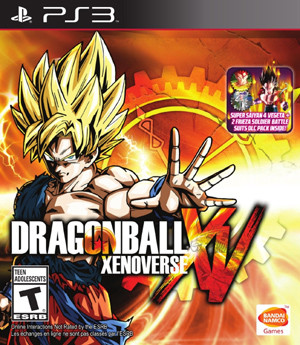 Developer: Dimps
Developer: Dimps Publisher: Bandai Namco Platform: PlayStation 3 / PlayStation 4 / Xbox 360 / Xbox One / Windows Release Date: February 24 Best Fighter: Mr. Pig MSRP: $59.99 We should answer this new Dragon Ball game's most pressing question first: what's a XenoVerse? Well, it loosely means “unknown territory” in its Latin/Greek loanwords, and it's clearly meant to evoke the vast and bizarre dimensional hinterland created when two villains crumble up the Dragon Ball universe's timeline like Oreo sundae toppings. Perhaps ChronoVerse would make more sense and draw in neglected Chrono Trigger fans, but then you couldn't shorthand the game as Dragon Ball XV. And that's important, because it's the 15th Dragon Ball fighter since Dimps' original Budokai. Xenoverse draws a lot from Dragon Ball Online, an Asian-market PC title that enjoyed a few years of life before shutting down in 2013. It survives in Xenoverse's avatar-creation system, where players can mold a character using traits of humans, Majins, Saiyans, Namekians, and whatever the heck Frieza and Cooler were supposed to be. Once assembled, the player's Original Character joins up with Trunks and the Time Patrol to track down two dimension-manhandling villains named Towa and Mira. This puts the player right in the middle of notable battles from the Dragon Ball Z series, though here they've all turned out wrong in some way. As in Quantum Leap and Voyagers, history must be set to rights. True to those Dragon Ball Online origins, players get a little more time to explore the Dragon Ball world and chat with familiar characters, and the scenery ranges from crowded city streets to those mountainous, easily animated vistas that hosted most battles in the cartoon. The combat follows the flow of Dragon Ball fighting, as superheroes clash in mid-air, toss laser beams, and, thanks to a special meter, teleport just in time to whack an opponent from behind. Xenoverse presents all of it with a sharp and fluid look, though its extensive roster is heavily occupied by alternate versions of the same characters. The allure seems to lie in making your own Dragon Ball Z hero or heroine, just like every childhood fan of the show probably did. This time, however, you can take that new character into online battles instead of just arguing about it on the playground.
|
DYNASTY WARRIORS 8 EMPIRES 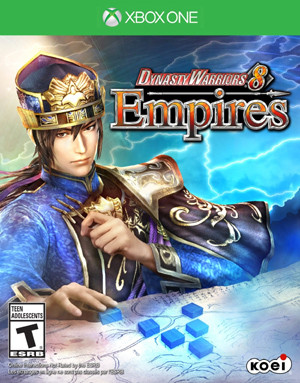 Developer: Omega Force
Developer: Omega Force Publisher: Tecmo Koei Platform: PlayStation 3 / PlayStation 4 / Xbox One / Windows Release Date: February 24 Worst Empire: That Orson Scott Card novel MSRP: $49.99 I could make fun of the cover for Dynasty Warriors 8 Empires. Past games in the series, even the stodgier strategic Empires variants, usually slap on a valiantly posed hero or heroine from Romance of the Three Kingdoms. This time, however, we have military advisor Xun Yu boredly shuffling little blocks around a map, which doesn't really evoke the glories of ancient China's turbulent power struggles. But then who am I to doubt the rampant success and unceasing spin-offs of Koei's Dynasty Warriors series? I mispronounced Nobunaga's Ambition as “Noabunga's Ambition” for most of the sixth grade. Xun Yu's cover arrangements are true to the underlying point of Empires. From the fourth Dynasty Warriors onward, nearly every game in the series gets an Xtreme Legends expansion as well as an Empires spin-off. The Empires titles combines strategic overviews with the same huge-scale battles you'd find in a typical Dynasty Warriors. Players direct a kingdom's growth, position their officers, recruit new characters, and manage the economic and political sides of a nation. Dynasty Warriors 8 Empires expands the character interaction so that a player's resident officers can make friends, fall in love, and even revolt if they're unhappy. Characters can also marry and reproduce, albeit with a limit of one randomly modeled child who'll join the battle. At least you can customize your own characters, foot soldiers, and horses. The Internet being what it is, I'm sure someone will fashion a cavalry of My Little Ponies. The game balances out of all of this with open-battle gameplay straight out of Dynasty Warriors 8 Xtreme Legends, though Empires offers wider strategy in the thick of battle. With shorter time limits here and there, the pacing keeps players from as much slashing and hacking as they might in a regular Dynasty Warriors. And that's the point of Empires, in a way.
|
HTOL#NIQ: THE FIREFLY DIARY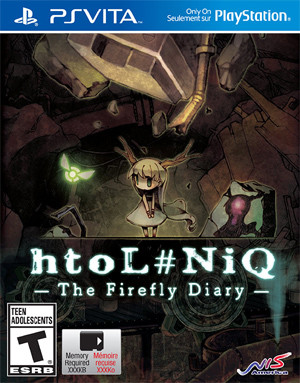 Developer: Nippon Ichi Software
Developer: Nippon Ichi Software Publisher: NIS America Platform: PS Vita Release Date: February 24 Worst Firefly: That Piers Anthony book MSRP: $19.99 /$29.99 (special edition) I can't shake my fondness for the quiet, messy ruins of civilization. I know it's a basic evocation of loss and decay, and I know it's a particularly overused visual motif in video games. I still like it. htoL#NiQ: The Firefly Diary may have a title I never want to type in full ever again, but it has the number of just about anyone who wants a spread of bedraggled, intriguing, post-apocalyptic wreckage to explore. The Firefly Diary follows Mion, a girl who awakens beneath a vast complex of rotting machines and decrepit scaffolding. She has a bad case of amnesia and a pair of antlers, and you don't control her directly. Instead you guide two glowing sylphs with the PS Vita's touch controls. The system's front screen links to Lumen, a green firefly that Mion follows about. The system's rear touch-panel controls Umbra, a purple firefly who can move only through shadows. The three of them journey upward through the rubble and remnants of an apparently advanced society, encountering mysteries and shadowy creatures. Along the way, Mion occasionally recovers brief and playable pixel-flashes of her life. The sepia imagery and soft music present an intriguing and elegiac picture, like some largely silent stop-motion short you might've caught on Nickelodeon as a kid and remembered even as an adult. With Mion an obedient servant of her two glowing guides, The Firefly Diary plays like a point-and-click puzzle game. It begins with simple block-shoving and path-finding, though Umbra's introduction complicates everything. The purple sprite is limited to shadows, so it falls to the other characters to arrange objects and even monsters to allow Umbra movement. Opinions of the game's Japanese version were divided; most praised the atmosphere, but some found Mion a clumsy and stiffly fragile heroine. The Firefly Diary will appear as a digital release, but physical editions are available from NIS America's website. The special version includes a soundtrack, artbook, and slipcase, and at $29.99 it's noticeably less than the box sets for other games.
|
HYPERDEVOTION NOIRE GODDESS BLACK HEART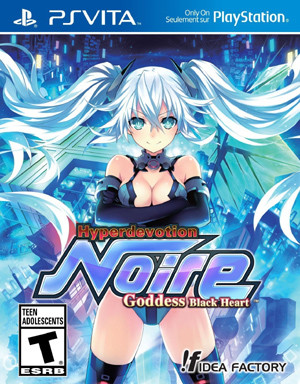 Developer: Sting Entertainment/Compile Heart
Developer: Sting Entertainment/Compile Heart Publisher: Idea Factory International Platform: PS Vita Release Date: February 24 Best Goddess: The 3DO MSRP: $39.99 As we're talking about covers and titles this week, here's some trivia for those followers of minor costume changes. Idea Factory made slight adjustments to show slightly less cleavage on the North American and European covers of Hyperdevotion Noire, though an earlier version (at left) showed the same amount as the Japanese release. What's more, fans can get a reversible cover plus an artbook and wallscroll if they buy the special edition. I suspect this was done to placate the ESRB, because there's not much reason to censor the cover otherwise. A few traces of décolletage aren't going to make the difference between your typical Madden customer picking up Hyperdevotion Noire or leaving it on the shelf. What's more, exposed flesh is a selling point for the Hyperdimension Neptunia series, which envisions revealingly clad superheroines to represent various game systems. Hyperdevotion is a spin-off as well as a PlayStation Vita game, so it stars the PlayStation avatar Noire, who morphs from a frilly-clad girl into a white-haired cyber-crusader. In the warring realm of Gamarket, she joins her Xbox, Sega, and Wii-themed rivals so that they may save their world and product lines. Much of the appeal comes from nearly every character being a walking, talking in-joke, and Hyperdevotion Noire adds a round of new heroines to represent popular franchises. There's an eyepatch-sporting gray-haired Metal Gear parody named Lid, a Dragon Quest knight named Estelle, a Final Fantasy girl named Ein Al, a Hatsune Miku take-off called Tsunemi, a Pac-Man character named Lady Wac, and at least a dozen other tributes. Even the Wii RPG Opoona gets a superheroine. Many previous Neptunia titles were straightforward RPGs, but Hyperdevotion Noire marks itself as a strategy game. The heroines, shown here as large-headed effigies, wage grid-based battles in stages fraught with traps, conveyor belts, and even boardable steam engines. Obstacles can be tossed, and ailments range from conventional stat-reducers to curses that turn heroines into tofu or devolve them into NES-like pixelwork. In an unsurprising move for a Neptunia spin-off, the characters also boost their abilities by kissing each other on the battlefield (including the Metal Gear heroine, of course) through the “Lilly Boost” system. It's all the work of Sting Entertainment, developer of such elaborate strategy-RPGs as Riviera, Knights in the Nightmare, and Yggdra Union. That makes Hyperdevotion Noire worthy of some attention among those who normally ignore the Neptunia series, so perhaps that cover will make a difference after all.
|
UNDER NIGHT IN-BIRTH EXE: LATE 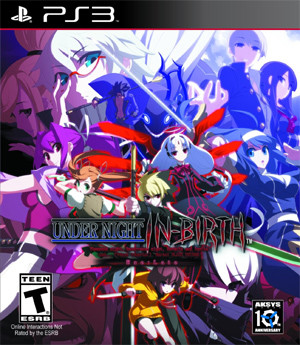 Developer: Ecole Software/French Bread
Developer: Ecole Software/French Bread Publisher: Aksys Games Platform: PlayStation 3 Release Date: February 24 Best Hair: Hilda MSRP: $39.99 All right, Ecole Software and/or French Bread. You win. htoL#NiQ: The Firefly Diary made a strong showing and Dragon Ball Xenoverse put up token resistance, but Under Night In-Birth Exe: Late has the most ridiculous title of any release this month. Indeed, I doubt anything else this year will surpass it. So what does it all mean? We'll start at the beginning. The Hollow Night is a mysterious force overtaking modern Japan, and it releases shadow beings called Voids. These creatures attack the few humans who can perceive them, with their victims left either dead or insane. The rare survivors can become super-powered beings called In-Births, and they form quarrelling underground organizations to fight off the Hollow Night. Of course, this results in a fighting game full of twisted archetypes. Protagonist Hyde summons a sword, heroine Linne wields a knife-longblade combo, the temperamental Carmine summons weapons made of blood (and looks a lot like Freeman from Mark of the Wolves), the ancient bioweapon Vatista uses hologram wings and lasers, and so forth. All of the characters clash in a story mode built like a visual novel, and it's reminiscent of Ecole and French's work on Melty Blood. This time around, though, they don't have to pay royalties to the Tsuikihime franchise. Under Night In-Birth Exe: Late looks decidedly sharp for a 2-D fighter, though its most notable feature might be a meter at the bottom of the screen. Called the Grind Grid, it tracks each fighter's aggression: attacking or moving forward increases it, taking hits or retreating reduces it. The first player to reach the meter's centerpoint goes into a Vorpal state, which boosts a combatant's attack and enables Chain Shift combos. You can read more about it in our own review of the import, and Aksys reportedly won't change much (in other words, no English voice-overs). Under Night In-Birth Exe: Late may well go neglected, due to the goofy title and the unfortunate apathy that dogs many lower-profile fighting games on these shores. Yet there's clearly more to this than a confusing name. |
Resident Evil: Revelations 2 debuts on the PlayStation family, both Xboxes, and PCs...sorta. It's just the first chapter of a four-part game to be doled out over the next few weeks. Capcom promises a central survival-horror quest as well as a multiplayer Raid mode, and it returns some familiar names to the fore. Claire Redfield and Barry Burton take lead roles, and they're supported by Barry's daughter Moira and a kid psychic named Natalia. Kid psychics are rarely tolerable in video games, but I know at least one fan (me) who'll brave that possible annoyance just to see what Claire's doing. She's been away too long.
discuss this in the forum (24 posts) |
this article has been modified since it was originally posted; see change history